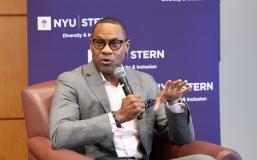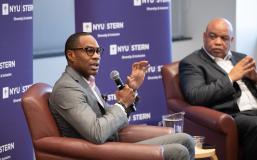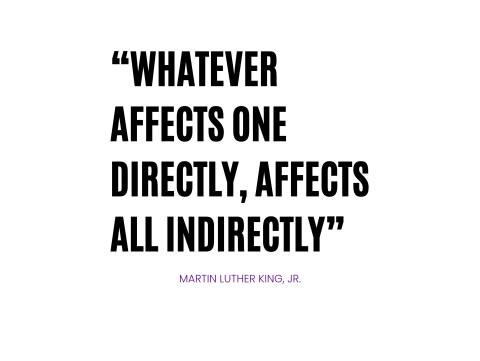
Book Dialogue: "Innovating for Diversity"
Bertina Ceccarelli, CEO of NPower, and Susanne Tedrick (Stern EMBA J25), author of "Women of Color in Tech", join Associate Dean Victor Mullins and the Stern Book Club to celebrate the release of "Innovating for Diversity"—a bold look at how leading companies are turning inclusion into a driver of innovation and success.
Marion Brooks, VP and US Country Head of Diversity, Equity, and Inclusion at Novartis, Engages with the NYU Stern Community
NYU Stern hosted an insightful discussion with Marion Brooks, VP and US Country Head of Diversity, Equity, and Inclusion at Novartis. Attendees explored key leadership skills for today’s diverse business landscape.




The Power of Showing Up
At NYU Stern, community wellness is more than an event—it’s a commitment to supporting the whole person. In a recent NYU Stern Black and Latino Alumni Wellness session, alumna Jasmine Henry (BS/MS ’17) led a thoughtful workshop followed by an energizing workout. It was a joyful reminder that well-being and belonging go hand in hand.

